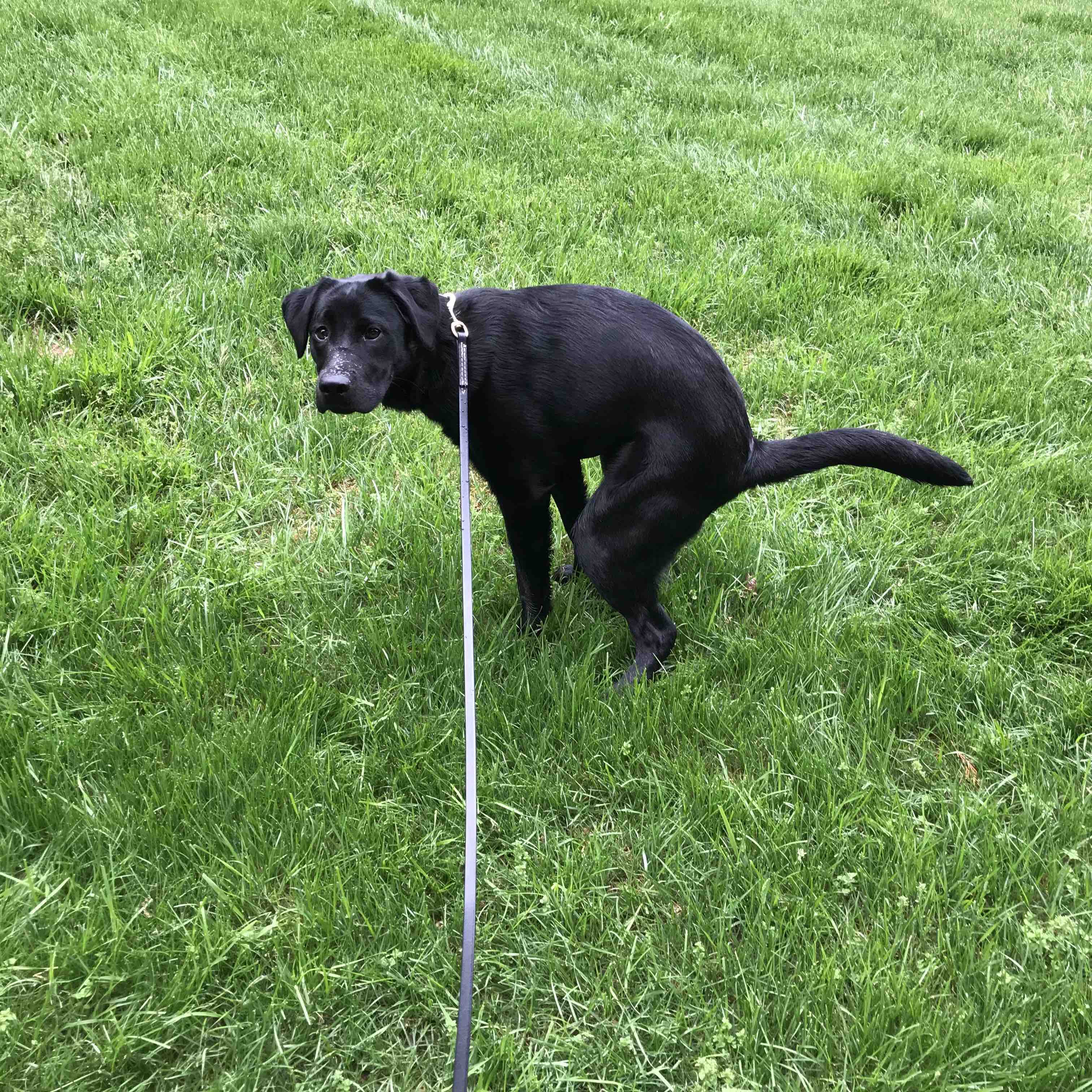3 House Training Mistakes Most New Owners Make

Does house training your puppy or new dog have you at your wits’ end?
You’ve done all the research, shopped for the essentials (well, maybe more than just essentials!) at your local pet supply store, you’ve even got the puppy! You know how important it is to house train; after all, no one wants to clean up after their dog forever, right?
But here you are, days later, and you’re still stalking the rooms of your house with your enzyme cleaner in one hand, and your roll of paper towels in the other, finding puddles and “presents” every time.
Are you making one (or more) of these very common puppy house training mistakes? Read on—success may be much closer (and simpler) than you thought.
- They must know where NOT to go
- They must know where it IS okay to go
- They must be physically able to “hold it” until they get to where it is okay to go
House Training Mistake #1: Not practicing EYES ON supervision while the dog is out of its crate
Most puppy and dog owners I talk with about house training problems keep an eye on their puppy or dog. This is so important, and a great start! However, “keeping an eye on” the puppy may not be enough vigilance during house training.
Since the un-house trained dog either 1) doesn’t KNOW the house is not the place to go, or 2) is physically not yet able to hold it, they will feel the discomfort of having to go, and do what comes naturally, which is to eliminate, in order to feel better.
Puppies with the instinct to keep their living space clean may sneak off to a less-used room or hallway–this is actually the right idea! It should not be taken as a sign the puppy is hiding because he “knew he was doing the wrong thing”.
If we’re not right there, with EYES ON, to notice the subtle signs a dog or puppy gives before going, we’ll miss them. Look for the puppy that suddenly stops playing and wanders off, starts sniffing the floor, or maybe even heads for the door.
If we don’t have EYES ON, we won’t be able to move that puppy to where it IS okay for them to eliminate in time, thus missing an opportunity for the puppy to get it right, in the right place. We miss the opportunity for the double reward of the feeling of relief, plus your praise.
EVERY TIME a dog eliminates, it’s an opportunity for him to be on track to be house trained, OR to be on track to be NOT house trained.

House Training Mistake #2: Not controlling the “input” part of input –> output
Free-feeding and constant access to water are the undoing of many a would-be house trained dog. If you don’t know how much is going in, and when, it’s very difficult to predict when your dog will need to eliminate.
If you offer food and water on a schedule, you KNOW when the input happens. Then it’s pretty easy: wait 20-30 minutes, and take the dog to her potty spot for the opportunity to succeed once again.
Some dogs’ metabolism is faster, others’ slower. If you’re observant, you’ll quickly learn whether your dog needs more time or less time between eating/drinking and pottying.
Taking food and water up by 6 or 7 p.m. allows for plenty of time (and a couple of potty breaks) before bed time, so that your puppy goes to bed empty. Since dogs’ bodily functions slow down overnight, the same way ours do, you can usually count on a longer break before she’ll need to go again. You’ll be on your way to a full night’s sleep before you know it!
House Training Mistake #3: Not supervising the dog outside
Simply letting the puppy or dog out the back door to eliminate has the potential to set up a whole bunch of bad habits.
I know, I know, it’s cold, it’s wet, it’s dark, it’s hot, it’s raining, you’re still in your pajamas…there are 50 reasons not to go out with your “in training” dog. But…if you aren’t there, how do you know he actually went?
And if you don’t know that, how can you know when he will next be likely to have to go?
If you aren’t out there, your puppy or dog will likely take the opportunity to do way more than eliminate. He’ll run around, smell all the smells, roll around in WHATEVER. Potty time becomes blended with play time, and he knows the sooner he goes, the sooner play time will be over.
This will NOT make you happy when it’s cold, wet, dark, hot, raining, or you’re in your pajamas. For the rest of your dog’s life.
Taking the puppy outside, ON A LEASH, allows you to know if he’s gone. It allows you to dictate where he goes (yes, this makes for easy cleanup!). It also allows you to teach a word for what you want him to do, AND it conditions the dog to get busy doing it quickly.
Imagine the dog that will eliminate quickly, on cue, and how nice that will be when you’re traveling , when you wake up late and have to rush out the door, or when you don’t have time for a 45 minute walk but you KNOW your dog has to poop.
Isn’t this worth investing a few weeks’ effort?
Thinking of trying ‘bell training’? We have a new blog post about why you may want to think twice: CLICK HERE to read it!
Have house training questions? We’re happy to give you answers! Put them in the comments below! ↓
